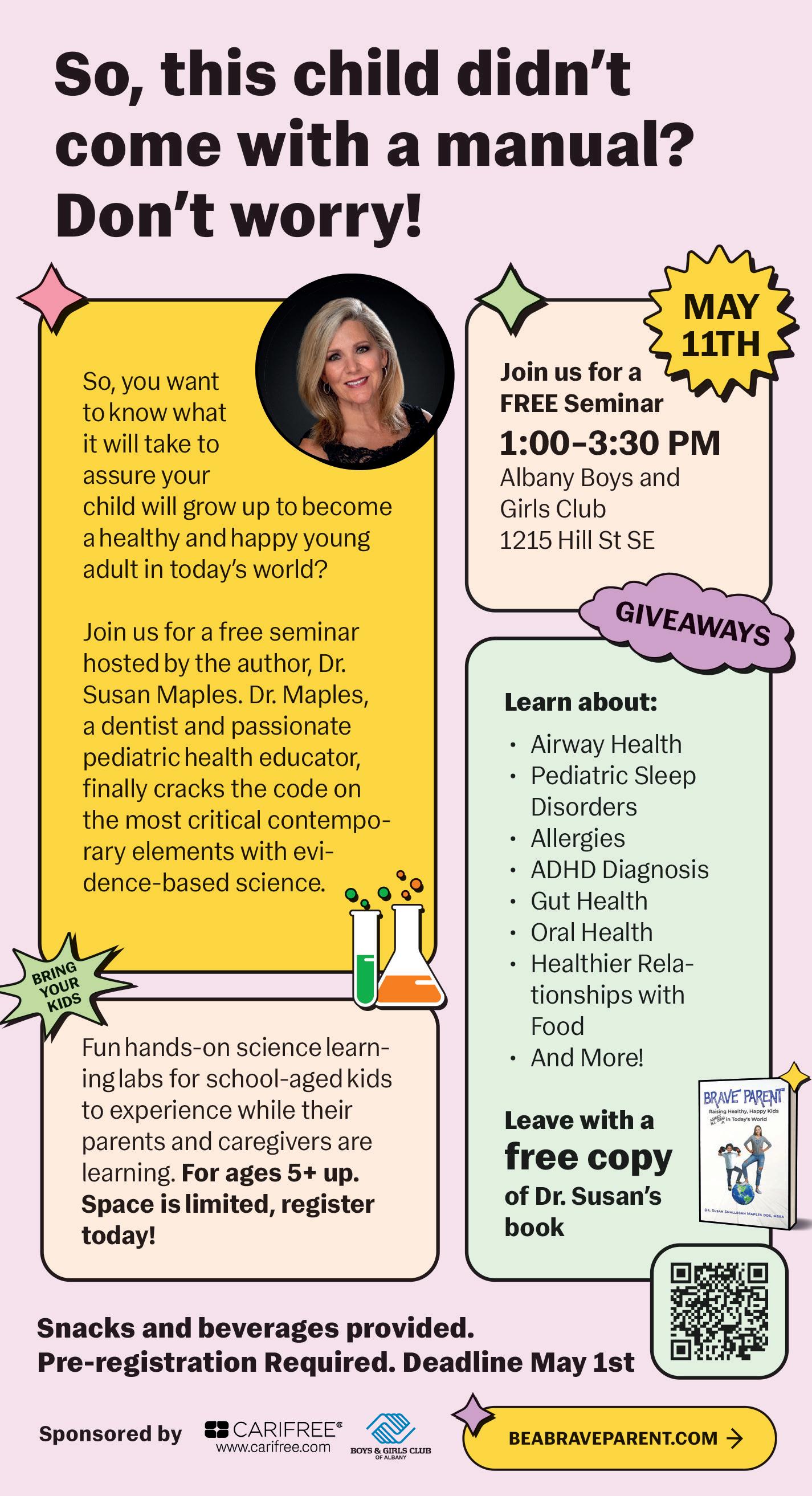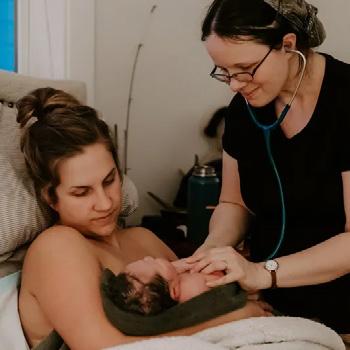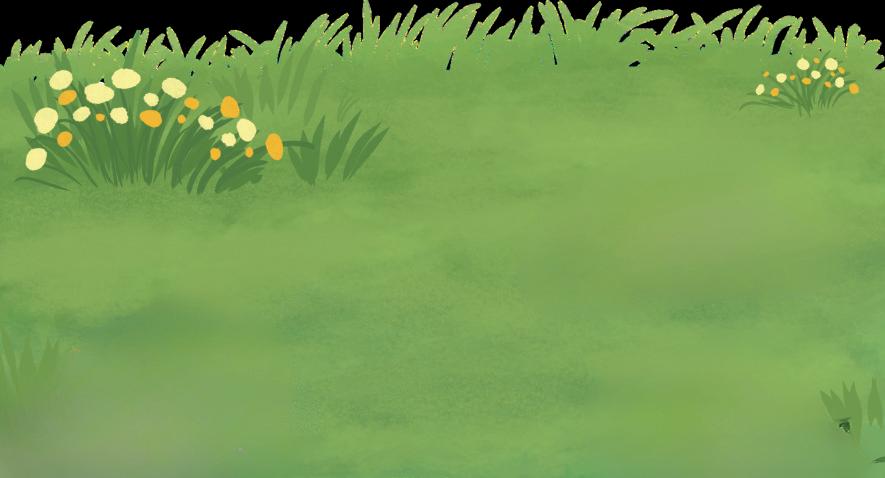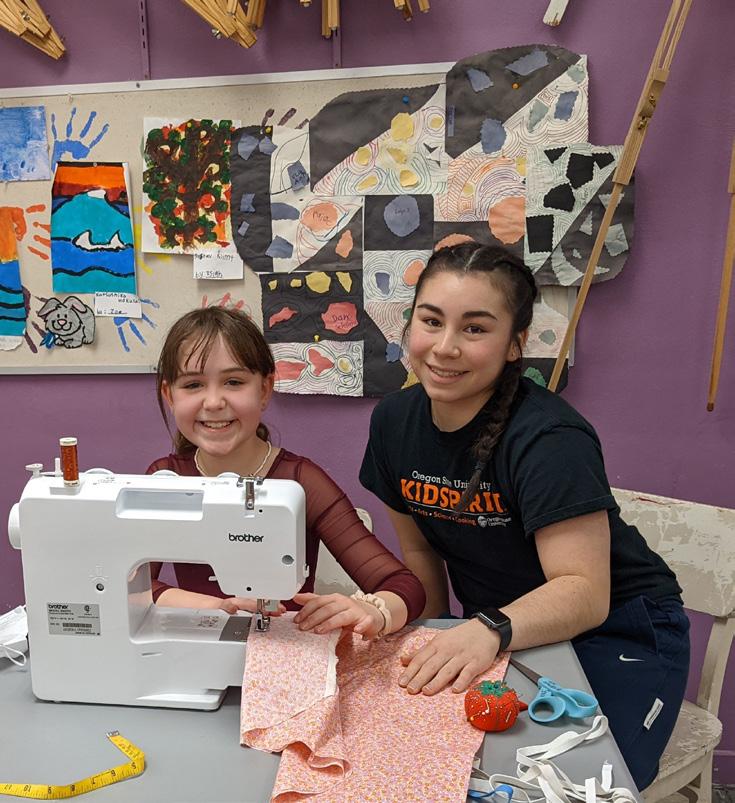COVER MOM
HOIYEE CHEUNG

GRANOLA RECIPES GETTING THROUGH GRASS ALLERGY SEASON

COVER MOM
HOIYEE CHEUNG

GRANOLA RECIPES GETTING THROUGH GRASS ALLERGY SEASON

As a parent or guardian, it can be challenging to know when your child needs medical care. It can be easy to second-guess yourself. When in doubt, follow your instincts. If you think something may be wrong, err on the side of caution and call your pediatrician.
Here are a few telltale signs that your child needs to be seen by a doctor right away:
1. They have a fever: If your baby is under two months old, a temperature of 100.4 degrees or higher is an emergency. If they are older in age, a fever over 100.4 degrees that lasts three or more days could signify a problem that requires antibiotics or further testing.
2. They are vomiting and have diarrhea: Occasional vomiting or diarrhea is common in children. However, if they have both symptoms simultaneously, there could be a bigger problem, such as an infection or dehydration.
3. They’re having trouble breathing: If your child’s nostrils are flaring when they breathe, their ribs suck in with each breath, they are making a funny noise or wheezing, or they are just breathing quickly for a while, it’s time to call your pediatrician. If their lips or nails have a bluish color, call 911 right away.
Do you need to talk to a local pediatrician you know you can trust? Call us to schedule an appointment with one of our board-certified pediatricians.





Let’s Talk Health with Samaritan Health Services, page 6

Reimagine Your Home with Rylee Henderer, page 8

Support
Support for Families with Audrey Benson, page 10
[They know what they’re talking about]

Focus on MOM with Dr. Carli Lancaster, page 7

Something to Smile About with Dr. Jay Vaikuntam, page 12


Pets are Family with Dr. Josiah Moses, page 14

Play with Adrienne Fritze, page 28

Partners in Education with Anna Marie Gosser, page 34

Helping Kids Thrive with Karen Swanger, page 16

Natural Choices with Jasmin Woodside, page 36
Say Cheese with Dr. Wade Haslam, page 38
Publisher
Matthew Nelson, Active Media, Inc PO Box 672, Aurora OR 97002-0672 info@activemediausa.com
503-825-2100
Editor-in-Chief Managing Director
Audrey Meier DeKam audrey@mommag.com
Mid-Valley & Lane County Business Development Manager
Linda Blair linda@mommag.com
541-231-7250
Salem Advertising Representatives
Kim Leighty kim.leighty@mommag.com
503-510-9036
Tina Toney tina@activemediausa.com
503-991-4547
Designer
Sean Carver sean@activemediausa.com
On a recent press proof day, as our graphic designer and I combed through oversized printouts of the magazine, I said to him, “I left my children home alone, asleep in their beds.” Before you call protective services, my kids are ages 14 and 16, and this was on a non-school day where they would sleep until noon. The novelty of leaving them alone had struck me as I locked the door on my way out. They could groggily roll out of bed and toast themselves a bagel or three. I had fully arrived in the Teenage Territories.
This kind of moment felt like a faraway country back when I was in diaperland. It’s precisely why I made note of it to our designer, who has two boys ages 4 and 8 and is still very much in the trenches. When my kids were young, I’d catch snippets from other parents who lived in magical lands where their kids could do things like buckle themselves into their car seats. How is that even possible? I’d wonder, while attempting to clip a stiff-as-board tantruming toddler into a five-point harness.
These stages with kids are like islands, starting with the Isle of Postpartum: it’s beautiful but with a constant fog overhead. The Toddler Islands are magical and filled with equal parts frustration and wonder. The Early Years Atolls are littered with brightly colored art and legos. The Adolescent Archipelago is a string of small islands that involves hopping back and forth between child and quasi-adult. Moms with kids of varying ages have to navigate sailing between them, which I picture as a minivan-shaped speed boat. Where I find myself now, in the Teenage Territories, there is autonomy for its citizens but it is still a protectorate of the Land of Adults. I can see in the far distance that we’ll soon hit the landfall of Emerging

Adult Island, which friends tell me is forested with trees of independence yet still plagued by weeds of worry. There’s more past this, but it stretches far beyond my horizon line.
Our time on each island is fleeting, and we’re launched to the next island, ready or not. One day you’re wiping butts, and the next buying them shaving cream. There’s also no going back to previous places, hence the unhelpful platitude to enjoy them while they are young. Once in a while, my husband and I get wistful and ponder what it would be like to go back in time to visit our kids’ babyhoods. We both agree that one day is all we’d need before remembering the bone-weary exhaustion that went with it.
I keep my ears open when parents with adult children talk about them, to prepare myself. I may not fully know what’s coming, but I know from where I’ve been that with each move, there’s a lot less gear to haul around — and a whole new world to explore. Cheers,
Audrey Meier DeKam Editor-in-ChiefHave a question you forgot to discuss at the doctor’s office or are too embarrassed to ask? The experts at Samaritan Health Services are here to help.
Q: My child is active in athletics at school and in summer programs, and often has shoulder and knee pain. Why does this keep happening?
A: Sports offer children and adolescents many benefits. But their growing bones make them more susceptible to injury, especially when overused muscles become inflamed and painful. During growth spurts in children, bones can grow faster than the related muscles and tendons. This irregular growth rate can lead to tight and inflexible muscles, making them


more prone to injury. Repeatedly using certain muscle groups, such as shoulder muscles with swimmers or leg muscles in runners, without proper stretching or adequate rest can cause repetitive overuse injuries.
Overused and inflamed muscles need rest. Without it, inflammation builds up and can lead to more serious injuries like a tear or fracture.
Make sure your child is training gradually, using proper stretching techniques with warmups and cooldowns, icing muscles after activity, and
Q: My child isn’t listening to me and keeps acting out. How can I get them to listen and learn not to act out?
A: Start with using positive reinforcement, instead of discipline. Praising your child’s good behavior versus focusing on the negative is proven to be more effective in helping a child learn and grow. Below are some ways to use positive reinforcement with your child.
Praise small wins — Focus on good behaviors that are small and maybe even seem ordinary. These small wins happen throughout the day and are good ways to compliment your child.
Give rewards — Have rewards for small steps that can help your child achieve a bigger goal. Don’t have a grand reward for a long-term goal that might seem unachievable to your child.
Brought to you by:

taking time off each week for the body to rest and recover. Participating in different sports activities is important to strengthen more of the body’s muscles.
If your young athlete’s pain continues, even after following these guidelines, talk with their primary care provider about possible treatment options.
— James Pash, DO, Mid-Valley Children’s ClinicBe consistent — Consistency with praising your child as well as setting boundaries can help your child build the behavior you are trying to encourage.
Follow through — It is important to build trust with your child, which includes following through. This means not making a promise you will not keep. Give a reward when it is promised, as well as an appropriate consequence as warned. Always follow through with it.
— Fagan Brown, LCSW, Samaritan Albany General Hospital Behavioral Health — Pleasant View
Brought to you by:

Seasonal rhinitis, also called hay fever, is an allergic reaction to pollen from trees, grasses and weeds. One of the most obvious symptoms is red, itchy eyes.
A number of over-the-counter antihistamine eye drops are effective for eye allergy relief. Pataday is approved for ages 2 and up. Contact lens wearers can be disproportionately affected by allergies, even established and successful wearers, so limiting wear time or switching to a daily disposable contact lens might be in order.
In times of high pollen, showering and washing hair at night reduces the chance of prolonged concentrated exposure to pollen while sleeping. While you’re outside, wearing glasses or sunglasses can act as a barrier and lessen the chance of pollen contacting your eyes. Keep home and car windows closed to help keep out allergens, and use recirculating fans or air-conditioners instead.
Tempting as it is for kids (and adults) to want to rub itchy eyes, don’t: it can cause real damage and only makes matters worse. A cold compress over closed eyes can be comforting.

Carli Lancaster, OD eyecareassociates.net
Albany Willetta St SW (541) 926-5848
Albany Custom Eyes (541) 928-2020
Downtown Corvallis (541) 757-1120
NW Corvallis (541) 752-4622
Lebanon (541) 451-5808
Lincoln City (541) 614-0946
Salem (971) 377-2703


Busy families need homes that function, and summer is the ideal time for a home remodel.
Professional design-build teams streamline the remodeling process, offering practical solutions tailored to the unique needs of busy families. From creating functional spaces to facilitating communication, discover how working with experts can make summer remodeling a stress-free endeavor.




Families need spaces that can effortlessly accommodate their dynamic lifestyles. In the design process, be sure to discuss the importance of family-centric design, where professionals can consider the needs of every family member, from young children to busy parents. Explore how thoughtful layouts, durable materials and multifunctional spaces can enhance daily life and foster harmony in your home.
Summer is a time for relaxation and adventure, and families want to minimize disruptions. Design-build teams excel in streamlined scheduling, ensuring that your remodeling project progresses smoothly. Not only do we help bring your remodel vision to life, it’s our job to make sure permits, subcontractors and materials are on schedule. Our expert project management keeps your renovation on track while allowing you to enjoy the season to the fullest…and summertime is perhaps the easiest time to be out of a kitchen, or out of the house entirely for a while.
A good design-build team will ask you about your needs for the entire year, which sometimes homeowners overlook. In the PNW, mudrooms get plenty of use in the rainy season, and outdoor kitchens are popular when it’s warm. If you’re doing a big remodel, envision how you and your family will enjoy it each season.
We keep families informed and engaged throughout the process, even amid hectic tee-ball and swimming schedules. From initial consultations to project updates and final walkthroughs, open dialogue and transparent communication ensure that your vision is realized with precision and care.
Rylee Henderer grew up around construction job sites, sweeping up endless sawdust in the shop. She formally joined her family’s business in 2017 and learned everything from demolition and framing, to tile and cabinetry installation. From there, Rylee grew into client management, and along the way found a love for design. She is now a full-time designer, creating beautiful, innovative spaces for Henderer Design + Build + Remodel.
hendererdesignbuild.com / 541-753-5660
info@hendererdesignbuild.com
2350 NW Professional Dr. Corvallis


right words can make a significant impact when communicating with young children.
Parents often find themselves frustrated when their kids seem to resist a simple answer of “no.” While tantrums can be exasperating, it helps to consider the child’s perspective. Imagine being told a flat no, without alternatives or much thought — it would be perplexing and frustrating for anyone!
To ease this communication challenge, try some simple language adjustments to redirect your child’s busy mind, maintain positivity and uphold boundaries without adding struggles.
First/then language: This approach helps sidestep the direct use of no and introduces sequencing for children to follow. For instance, if your child is eager to head to the park right after school, instead of a straightforward no, try saying, “Oh great! I’m excited to go to the park, too. First, let’s unpack our backpacks and have a snack — then we can go to the park. Can you please get your backpack?” This not only communicates the need for order but also maintains a positive tone.
Yes/when language: This language shift continues to support sequencing while avoiding the negative impact of a direct no. For example, if your child brings you their iPad, but screen time isn’t scheduled for hours, rather than a blunt no, say, “Thank you for reminding me to bring the iPad. Yes, you can use this on the car ride home, when we get back from our playdate. Would you like to help me put it on the charger before we leave?” This approach acknowledges the child’s request and redirects their attention to a more suitable time.
By incorporating these language adjustments, we can create a more positive and cooperative communication environment with children, fostering understanding and collaboration in daily routines.
Brought to you by:



Monday - Friday, 9: 0 0 - 12: 0 0
Each rider is assigned their “own” horse for the week There is plent y
t acking up, and of course riding
Learn more about our programs and riding lessons, and download forms to get st ar ted at inavalefarm com .
July 8 — 12
July 22 — 26
August 5 — 9
August 19 — 23
31786
Philomath, Or 97370 (541) 929-5706
inavalefarm.com





April

April



We see children each day with severe wear from teeth grinding. Oftentimes, the child doesn’t even know they are doing so because it’s happening while they are sleeping. It can be stress-related, from a nightmare, or for no known reason at all.
Statistically, about 35% of children grind their teeth. For a child with baby teeth, the mouth is constantly changing, so a night guard cannot be used because it restricts the natural order of losing baby teeth and erupting permanent teeth. Unless there is pain, we will monitor your child until the permanent teeth start coming in.
If your child continues to grind their permanent teeth, we discuss options to help. You would be surprised how much enamel can be ground down without your child having pain.










































































Brought to you by:
Moses, DVMIn

Is your furry friend plagued by relentless itchiness? From toe-licking marathons to smelly ears, dealing with pet allergies can be exhausting. The toll it takes on both you and your companion is undeniable — sleepless nights, constant grooming and dreaded infections. But there’s hope in the chaos.
In many cases, the culprit behind these allergic reactions boils down to one simple factor: protein. Pinpointing the exact protein triggering the response, however, is the real challenge. In Western Oregon, where environmental allergens often take center stage, fleas are most often the leading culprit. Dietary proteins can also play a role.
As a dedicated veterinarian, I understand the frustration all too well. Relief may seem daunting, but together, we can navigate the journey. Step one? Prescription flea prevention. Then, we embark on dietary detective work and then confront environmental triggers.
But here’s the catch: even though it’s often one culprit, seasonal timing and multiple factors can muddy the waters. It’s vital not to overlook the year-round flea dilemma, which can mimic seasonal allergies. With help from your veterinarian, you can pave the way to a happier, itch-free existence for your furry companion.







Preschool is often the first structured environment your child is exposed to, and you might be concerned about their readiness.
Red Light, Purple LightTM (RLPL) is a low-cost program at OSU in the Hallie Ford Center for Healthy Children and Families that can be easily implemented at home or in the classroom. Developed by Dr. Megan McClelland and her colleagues at OSU, it facilitates and strengthens children’s memory and attention flexibility by encouraging adults to incorporate self-regulation into children’s lives using games and play. Games in the program mimic traditional childhood games, such as red light, green light, while focusing on developing listening skills and following instructions. As sessions progress, skills are developed, and children are encouraged to follow more complex instructions and tasks. The research concluded that when children participated in RLPL, they showed improved math and listening skills.
At KidSpirit, we used evidence-based research like RLPL Intervention in our staff training. It’s one of many benefits of being part of a university, and it reminds us that child’s play is more than just fun and games: it’s an opportunity to help kids develop important life skills that set them up for success.












PROFESSION:
Co-creator of sacred spaces, reclaimer of ancestral ways, farmer
COMMUNITY:
Southtown Corvallis
CHILDREN:
Nayla, age 9, and Alki, age 4
PHOTOS BY:
CHRISTY CAMPBELL CREATIVEAll families are unique. Tell us about yours. Our family is unique because the kids are biracial. Growing up, my family and extended family were all Chinese and Hakka. We shared the same language, food, traditions, philosophy, values, spirituality, there was a lot of glue holding us and our immigrant communities to one another. In a mutiracial family, everything is different and new — we are constantly inventing, being creative in inclusivity, learning and teaching sensitivities of one culture and the other, developing our own blended unique traditions.
Tell us about your favorite…
…family game: We love to spend hours and days crafting.
…place to find some peace & quiet: The forest
…binge-worthy podcasts: Intersectionality Matters! and Green Dreamer: Seeding change towards collective healing
…way to get out of making dinner: I love making dinner, and I could spend all day in the kitchen if I could.
Tell us about one of your proudest mom moments. I struggle with the word proud when it comes to parenting, especially as a mom. I feel like “proud” is an achievement, with something non-human. I felt proud when I graduated from college, completed a long gruesome application or stepped up to an uncomfortable situation. I’ve asked other moms this question, and they said it’s when your child does something nice. With this example I think of that as something out of love, respect and honor for another human being. It’s an expectation at least in our culture. Culturally, proud is not a highly used word, it is almost a taboo. From what I learned from growing up and from my elders it is a feeling of “heart-filled.”
Now tell us about one of your most humbling mom moments. Parenting is all humbling everyday, not just moments! Humility in Chinese culture extends all the way to the dinner table. When someone would put out an overwhelming array of dishes for their guests, they would typically say it was
nothing. We believe we should downplay our personal contributions and do our best not to stick out. Our celebrations from our ancestral lineages are ways that remind ourselves we are able to put family/people before our opinions and problems. Practicing humility daily for me helps us to avoid competition and emotional spirals. The kids have a much better learning relationship with me, as they can see I am human too.
We’re all moms so we know that no one is perfect all of the time, or even some of the time. Tell us about your most recent “Mother of the Year” moment. You know, like forgetting to pick the kids up from school. I’ve forgotten Nayla from school multiple times and Alki too. Also, losing the phone in the refrigerator.
In what way are your children like you? How are they different? Nayla is a lot like a little version of me. Right now, she goes through all my emails and my phone calls and starts putting everything into the calendar. She wants to know everything, reading and absorbing everything she puts her hands on, it’s never enough details or information. She always has a million questions. Alki is very laid back, very sweet but can be demanding when things don’t go his way. He gets super angry and explodes with a million emotions. They are different from me in that they laugh with a full belly laugh that is deep to the core. They’re wild in every way. They both also have a natural creative and innovative talent whereas I waddle for a while looking for inspiration. I love that they have these traits.

We know that being a mom is a full-time job. How do you balance (or not) motherhood, activities, work, volunteering, household responsibilities, and life in general? What sometimes falls through the cracks?
We love locally owned businesses, restaurants, places and organizations. Share your favorite…
…coffee spot: The Dizzy Hen
…take-out, food truck or quick bite: The Barn and the back of HK Asian Market
…event in your community:
Growing Ancestral Roots celebrations, fiesta at my friend’s house or the park
Balancing. This one is one I struggle with the most! I started a community non-profit called Growing Ancestral Roots when Alki was 4 months old and grew it through the pandemic. When you add another human plus a new non-profit of 100+ people to the mix and little to no in family help…any sanity, organization, commitments, clarity was gone. When you do something so big and life altering, you have to accept the new life, create new definitions and reframe what and why you do things you are committed to.
Greater Corvallis, not including the university, is very white and lacks a lot of diversity and understanding compared to places I have lived around the country and world.
Living here for about a year, I fell into a really
low time, grieving the cultural presences and especially the acceptance. Growing Ancestral Roots was a natural lead into a bigger dream that filled a big gap in Corvallis. Everything we do is intentional, so communities of color could come together and create something where people are honored, respected and most of all loved deeply.
Tell us about your work or volunteerism outside of the home. Growing Ancestral Roots is a grassroots BIPOC-led organization with a food justice foundation, where our mission is to create a food system that uplifts the people. We are addressing the roots of the food needs, not just charitable giving, and creating necessary services like food deliveries from Corvallis to as far as Monroe, as well as low-cost food markets and entry opportunities for food products that are non-existent to our area.
What have you learned professionally that has helped you as a mom? As a (former) Boeing Aerospace Materials Engineer, I’m very
grateful that I have had the opportunity to work in an industry with my degree in engineering. It has helped me profoundly in everything that I do.
Do you have a goal you’d like to accomplish within the next five years? People passionate in social justice work are paid for their labor. It is immensely sad, when something our society needs, our leaders who push for change are unfortunately not compensated for their expertise, lived experience and time. Most people passionate about this work and making an impact are mostly doing it for free.
If mom’s not happy, nobody’s happy.
Tell us about your upbringing. How did it shape the mother you are today? I am the second of eight kids in a household of 11 people. As an eldest in a family, living in Albuquerque, New Mexico, with parents new to the United States, there are a lot of high expectations. Expectations for you to make it in this new world, to honor your family, to succeed. And not only that, besides the outside world, but within your family, you’re expected to help out in the family business and to help raise the children.
I didn’t have any toys growing up where toys were all outside with the dirt, sticks, trees. We would chase the ducks and chickens, dig holes to China, catch crawdads in the ditch, and spend a lot of time in the restaurant’s dry storage room. When we were at home, we spent a lot of time with aMa (my paternal grandma) in the garden caring for the animals, learning how to slaughter, start plants from seeds, saving seeds, creating our own fermented fertilizer, trenching, planting, grafting. My dad also did most of the building of our house out of all recycled materials he would find in dumpsters of home building warehouses. Our roof was three colors, the siding did not match, and our front lawn was covered in carpet to hold down the dust from sand storms — pretty sure nothing was to code.
We went through a lot of tough times with how my grandparents and my parents raised us the way they did. We went through the child protective services and lived in a foster care home for a while until my parents could get us back. Language services were not
accessible back then, especially Cantonese in New Mexico. It was a gruesome experience for me and for my parents to have to go through that. All my life, I was my parent’s translator — a natural position kids fall under in refugee and immigrant families. When did you realize you were no longer a child? When I was 7. I meet people that are in their 20s, even late 20s, who are so proud of themselves when they do their own laundry or cook dinner. My grandma wouldn’t let us leave the house if you couldn’t cook rice. I told Nayla that, and Nayla was like, I’m going to learn how to cook rice. She’s really good at it.
If you could instantly have one new skill (i.e. foreign language, musical talent, eyes in the back of your head, etc.), what would it be? Definitely language. I wish I could learn all 7,100 languages to embrace the beauty of the cultures in the world and its people.
What’s your guilty pleasure? (dark chocolate hidden in the pantry, TJ Maxx, daily latte habit?) Mochi and cupcakes
Listen to mom.
What is one thing you never had that you want for your kids? A childhood. This was something really hard for me. When Nayla started to socialize with me, I realized that I did not have a childhood. I was never a child, and I did not know the first thing about being a child. It was something I grieved the first and second year of Nayla’s life, but one day I decided I would copy her. I squatted when she squatted, rolled around on the ground even at the park in public, drew on my face, made messes like her, ate really sloppy, played with my food...it was funny but so fun!
What is something you think everyone should do at least once in their lives? Staying with families in a remote place, of a culture that is not of your own.
Who and what has influenced the mother you are today? The changing landscape, flowers, dormant plum blossom trees, Earth Mother, aMa, my dad and my mom.



Family rooms are where we spend most of our waking hours together. Make them as safe as possible, without sacrificing style.
Clear electrical outlet covers are a staple item for safety. Edge protectors for furniture and countertops also come in clear for a less distracting look.
The risk of strangulation on corded blinds is real — put your mind at ease with cordless ones. And with a streamlined look, cordless blinds are well worth the investment.
Get that lovely chandelier you always wanted. Installation will likely require a professional, but it is well worth it to keep floor and table lamps away from children.
Hard-edged furniture be gone! Trade out a solid surface coffee table for an upholstered one. Bonus if it has storage — just make sure it has soft-close hinges.
Goodbye plastic, and hello aesthetically pleasing, with safety gates like this one from Safety 1st. Even after your children outgrow the need for them, these gates are handy for pets, too
Have your TV mounted to the wall with cords hidden behind the drywall. This will likely require a professional, but it’s safer for children and it looks so much better than a messy tangle of cords.
Anchor your furniture to prevent your child from tipping a heavy piece onto them themselves. Wall anchor kits are widely available and bonus: you can’t even see them. With newer furniture, it’s now a federal rule; visit AnchorIt.gov to learn more.




Science
Mental


is both a




Granola is a high protein snack, with fiber and micronutrients, and it’s surprisingly easy to make. Same for granola bars: store-bought ones are convenient, but many are loaded with additives and stabilizers. Making your own allows you to control the amount of sweeteners and the quality of ingredients.
3 cups rolled oats
1/2 cup chopped walnuts
1/4 cup brown sugar
1/4 teaspoon salt
1/3 cup honey or maple syrup
1/4 cup oil
1 teaspoon vanilla extract
1/4 cup chopped dried apricots
1/4 cup golden raisins
Except for the apricots and raisins, mix all ingredients together until well blended. Spread flat on a baking sheet in an even layer and bake for 15 minutes at 300 degrees. Stir in the apricots and raisins, spread flat again, then bake for an additional 15 minutes. Let cool for 20 minutes before enjoying.


1 and ⅓ cups granola
1 and ⅓ cups vanilla yogurt
1 and ⅓ cups fresh strawberries, sliced 4 wide-mouth 8-oz. canning jars with lids Honey (optional)
Layer each jar with ⅓ cup of granola on the bottom, then ⅓ cup yogurt, and finally ⅓ cup strawberries.
Sprinkle a little more granola on top, and if desired, drizzle with honey. These are great to make ahead as snacks or desserts.

Granola is baked, usually with a sweetener, and muesli is raw. Trail mix has granola, nuts, dried fruit and oftentimes candy that, if your kids are like ours, they pick out and eat separately if you’re not watching.
Spread peanut butter on apple slices and top with granola.
Pour milk over granola and eat it as cereal.
Roll French toast in granola before frying for a crunchy spin.
Add granola to muffins or sweet breads before baking.
Sprinkle granola on a baked yam.

2 cups Grizzlies Brand All Organic Trail Mix
1 cup rolled oats
1/2 cup almond butter
1/3 cup honey or maple syrup
1/4 cup mini chocolate chips
1/4 cup dried cranberries
1/4 cup chopped almonds
1/4 cup shredded coconut
1 teaspoon vanilla extract
In a large mixing bowl, combine the Grizzlies Brand All Organic Trail Mix, rolled oats, mini chocolate chips, dried cranberries, chopped almonds and shredded coconut. Mix well.
In a small saucepan over low heat, warm the almond butter and honey/maple syrup, stirring until well combined and smooth. Remove from heat.
Add the vanilla extract to the almond butter mixture and stir until incorporated. Pour the almond butter mixture over the dry ingredients in the bowl. Stir until all the ingredients are evenly coated.
Transfer the mixture to a lined baking dish and press it down firmly to create an even layer. Place the baking dish in the refrigerator for at least two hours to allow the mixture to set.
Once set, remove the mixture from the baking dish and cut it into desired bar shapes.
Enjoy these perfectly easy and delicious on-the-go snack!

2 Cups raw nuts (any combination of almonds, pecans, cashews)
2 tsp smoked paprika
3 Tbsp wheat-free tamari
Quick & delicious dinner ready to go in 20 minutes or less!

½ lb. ground beef
½ small onion, chopped
1 – 9 oz. bag corn chips
1 cup grated cheddar cheese
2 cups shredded lettuce
1 bottle taco sauce or 1 pint salsa
Cook ground beef with onion until browned. Drain excess fat. Coarsely crush corn chips and place in bottom of ungreased 8x8” square baking dish. Spoon hot meat over chips. Top with cheese. Bake at 350°F for 10-12 minutes or until heated through. When casserole is heated through, sprinkle with shredded lettuce and serve immediately with taco sauce or salsa.









At Conundrum House, we’re all about fun and games, including puzzles. We offer a selection of jigsaw puzzles that will challenge your problem-solving skills and provide a delightful education in art, history, culture and more.
You can rent our puzzles to do at home, or spend the day with us at our location in downtown Corvallis. These are just a few of types of puzzles we have to offer:
Mysteries: Solve intricate art-related mysteries: first you read the mystery, then you piece the puzzle together to uncover clues. Try Clue Mystery Puzzle: Framed for Murder for a thrilling journey.
Nature: From vivid flora and fauna, to the ethereal swirls of Van Gogh’s Starry Night, these puzzles are your passport to the beauty of the natural world.
Mind-bending: Dive into the mind-bending world of artist-designed puzzles, especially those featuring M.C. Escher’s works. Escher’s art, renowned for its mathematical inspiration and intricate tessellations, challenges your perception in remarkable ways.
Surrealism: Surrealism is an art movement that transports you to a world where dreams and reality collide. Explore the boundaries of reality with a puzzle such as Voltaire Apparition Circular Puzzle and many others.
Visit conundrum.house to explore more of our puzzles, games and events. We specialize in innovative and immersive ways to play!

Brought to you by:
Adrienne Fritze Founder & owner














Having a family disaster plan gives you peace of mind before, during and after an emergency. This includes a family supply kit of basic items that members of a household may need for sheltering in place or for an evacuation. We recommend assembling a kit for your pets, vehicle and work location, as well.
Preparedness is a set of skills for all individuals. In the event of a disaster, when professional emergency responders are overwhelmed, each of us must be ready to help ourselves, loved ones, and neighbors.
The Community Emergency Response Team (CERT) provides free education to citizens about how to prepare for disasters and local hazards within their communities. Learning basic disaster response skills such as preparedness, fire safety and medical operations empowers you to help
your family, neighborhood and community before, during and after an emergency.
Oregon has over 50 CERT programs.
For assistance in building a kit or learning preparedness skills, find a CERT program in your area:
https://www.oregon.gov/oem/ community-preparedness/Pages/ CERT-Program.aspx
Sponsored by:


THE MID-WILLAMETTE VALLEY HAS CLOCKED SOME OF THE HIGHEST LEVELS OF GRASS POLLEN IN THE WORLD DURING WHAT LOCALS CALL GRASS SEED SEASON. AN ALLERGIST AND MOM IN EUGENE GIVES INSIGHT AND ADVICE ON THIS AREA'S MOST TROUBLESOME ALLERGEN.
Driving down I-5 South into Linn County, you’ll see a “Grass Seed Capital of the World” sign. The mood is celebratory but not for anyone sneezing their way through late spring.
We talked to Katheryn Birch, DO, of Oregon Allergy Associates in Eugene, for ways to help our kids get through the season.
Q: Is it true that babies don’t typically have seasonal allergies? When do pollen allergies typically show up in children?
A. Yes, it typically takes at least two years for seasonal allergies to develop, and that is also the case if you are moving to a new area. Children under age 2 can start to develop indoor allergies, because they are exposed to those more frequently than outside allergies. Pollen allergies can start to show up in 3 to 4 year-olds then there is a peak age range of 6 to 9 year-olds. Children can continue to develop allergies until around 13 to 14 years of age.
Q: What are the first signs/symptoms of allergies in kids, as well as some of the lesser known ones?
A. The most common symptoms are runny nose, sneezing, nasal congestion and itchy red eyes. Kids can also have “allergic shiners,” which is swelling with a purple hue under the eyes. Children are also more likely to have contact hives with grass or other plants, and some have difficulty with eczema. They can also experience post nasal drip, which is hard for
most children to explain or understand. The post nasal drip can lead to a lot of clearing of the throat or cough. The Willamette Valley has a lot of allergy-induced asthma. These types of symptoms are similar to a common cold, however the common cold typically lasts about 5 to 7 days, while allergies last several weeks to months depending on what you or your child may be allergic to
Q: C an you try your child on an over-the-counter allergy medication and see if it helps?
A: Allergy medications are typically very safe and have few side effects, so they are safe to try if you are uncertain if you are dealing with allergies. The over-the-counter (OTC) allergy medications can be helpful for some, but the most effective are the intranasal steroid sprays, antihistamine nasal sprays and antihistamine eye drops. These medications are acting directly at the source of the reaction. My children get some minor improvement with oral antihistamines, however they really see improvement with the intranasal steroid sprays. Initially they did not like the nasal spray and made a fuss. However, after they started to see the effects a couple weeks later, they stopped fighting it and now that’s the first thing they ask for when they start to have nasal symptoms. One of my children really struggled with a cough, even with all the OTC medications, and we did eventually have to start some prescription medications to help.

Q: At what point do you go from pediatrician to allergist, and what is the benefit of seeing an allergist?
A: If you're using all the OTC medications and still struggling to get symptoms under control, that’s when seeing the pediatrician can be helpful. There are a couple medications they may be able to prescribe for you. However, even with these, symptoms can still be bothersome. At that time it can be helpful to visit an allergist to see other medication options, and for potential testing that may be helpful in identifying what your child may be allergic to. I would also especially suggest evaluation by an allergist if your child is coughing a lot or having breathing issues with their allergies.
Q: Talk about the value of testing: is it specific to what grows here?
A: Allergy testing is helpful for us to identify what the problem is and how to avoid it more effectively. We typically test for multiple different types of indoor and outdoor allergens.
Allergists test for the type of pollen seen in their region. There is different pollen in different regions of the country, and there is variation in their season lengths. Trees, grass and weeds all have their specific time of the year they pollinate.
In western Oregon, we don’t have a lot of weeds and subsequently, not a lot of weed allergies, especially when compared to the Midwest. In the Willamette Valley, we have an unusually high grass pollen season, due to grass seed farms. For that reason, grass is one of the most common outdoor allergens here, and the most troublesome.
Grass pollen starts in May, peaks around Memorial Day weekend, and ends right around July 4. Once you see fields being baled and harvested, you know relief is on the horizon. In the meantime:
• Close windows and use your home’s air handler to limit exposure to outdoor pollen. Change your furnace filter to a HEPA one.
• Take a shower before bedtime, and keep those sheets clean.
• Use medication as directed. Review all medications for you and your children, and replace anything that has expired.
• Splurge on the super-soft tissues, as noses get red and raw.
• Keep your car clean, too, as well as windows up and recirculate on; change your car’s cabin filter for better interior air quality.
• If grass seed in the valley is getting to you and yours, take a trip to the coast. There will still be pollen, but typically less of it.

Q: Allergy shots can be a hard sell to kids. Are there any other types of treatments, like under-the tongue droplets?
A: Allergy shots, or subcutaneous immunotherapy, is very effective in school-aged children. It has even been shown to help decrease the development of asthma when started in 4 to 5 yearold children. However, we recognize that trying to convince a young child to come in weekly for several months to get a shot is not an easy sell. There are several different techniques that can be used to help ease the process such as cold packs, numbing creams and vibrations that help distract from the injection. The other key point for allergy shots is that they are subcutaneous so they are not going into the muscle, so they do not hurt as much and there is not a lingering pain after.
The other option that we have is sublingual tablets. In the U.S. there are ragweed, dust mite and grass tablets that are FDA approved. These are great

options for those who are really averse to injections. The biggest downside is they do not cover all other allergens and pollens if your child is polysensitized. However, for many in the Willamette Valley, grass is so much worse than the other allergens. The symptoms seem like nothing in comparison and treatment for the grass is a game changer.
You may see some things out there for other types of allergy treatment such as liquid sublingual immunotherapy or intralymphatic immunotherapy, but these are not FDA approved yet and have not had as much research done on them.









www.santiamchristian.org
541-745-5524 x 243
Do you have a child who doesn’t love Mondays, going back to school after vacations or changing teams? Many kids (and adults) find transitions challenging, as they prefer the safety and security of the known to the uncertainty and fear of what may come. But transitions don’t have to be the stuff of nightmares. Some ways to help:
Preview the space: If your child is heading to a new location, visit the space and walk around. Let their body experience the environment without stimuli and pressure. After a first exposure, we tend to not be in fight-or-flight mode.
Listen: Ask your child about what might be fun, tricky or worrisome about the transition. Having kids talk through concerns and outcomes can give them tools to navigate the uncertainty.
Take a buddy: When kids have a peer they trust or are familiar with to go with them, the transition can be less difficult or frightening. Having a friend gives many children an anchor in an unknown environment.
Purpose: Together, identify a task or role your child might have in their new environment. Having a purpose distracts the brain from worry.
Be positive: Celebrate accomplishments, grit and perseverance. Acknowledge your child when they have built skills and overcome fears, as this lays the foundation for future courage.
Transitions may never be your child’s favorite activity, but with some thoughtful planning and care you can make them less stressful for everyone.

Brought to you by:
Anna Marie Gosser Santiam Christian Elementary Principal








Come to First Alternative Natural Foods Co-op for all of your grocery needs. It’s the natural choice.

At the Co-op, we love to keep it crunchy! Everyone’s welcome at the Co-op, where we have the goods for granola and so much more.
Granola & Trail Mixes in Bulk: Head to the Bulk department for a selection of granolas and trail mixes that has to be seen to be believed. In the Co-op’s Bulk department, you can get as little or as much as you need, making it easy to find fresh favorites. Or craft the granola of your dreams by picking and choosing from our huge selection of nuts, seeds, oats, dried fruits and more.
Nature’s Path Love Crunch Granolas:
If you’re looking for a tasty treat at home, while driving the carpool or at a playdate, grab a resealable bag of Nature’s Path Love Crunch Granolas from the grocery aisles. Made with USDA Organic ingredients and Fair Trade chocolate, it’s an indulgence you can feel good about.
Two locations in Corvallis
1007 SE 3rd • 541-753-3115
2855 NW Grant • 541-452-3115
Open daily
www.firstalt.coop




The Eugene Airport is a proud part of what makes Western Oregon such a unique place to live and visit, with direct routes connecting to hundreds of destinations.




















































































2657
Corvallis | 541.757.2440
valleyvieworthodontics.com
The general idea of a mouth rinse is to dislodge trapped food particles and reach places that brushing and flossing miss. But is it necessary? Not if good brushing and flossing are consistent, which is sometimes easier said than done when it comes to kids. Children under age 6 should not use mouthwashes, as many of them contain levels of fluoride that can actually change the color and texture of young teeth. Once your child is old enough, you can teach them how to rinse and spit by practicing with water.
For anyone in braces, mouthwashes can be a useful tool in getting food out of brackets. A walk through the dental care aisle presents a dizzying array of choices. Narrow your search to finding a non-alcohol based formula, and choose a brand that contains fluoride and is approved by the American Dental Association.
Some patients may have unique dental needs where we might prescribe a mouthwash or recommend a different type of mouth rinse. And remind your child that mouthwash is a boost for oral hygiene: it can help, but does not replace good, regular brushing and flossing.

This smile is brought to you by:
WADE L. HASLAM, DMD, PC

When you pay attention to your body, you are more in tune with your health and well‑being. You know your own body best, and its signals are keys to feeling good and living fully.
You listen to your body, and the obstetrics and gynecology providers of Samaritan Health Services listen to you.
Let’s listen together so we can provide the care, healing and support you need to thrive. Learn more at samhealth.org/Listen.





